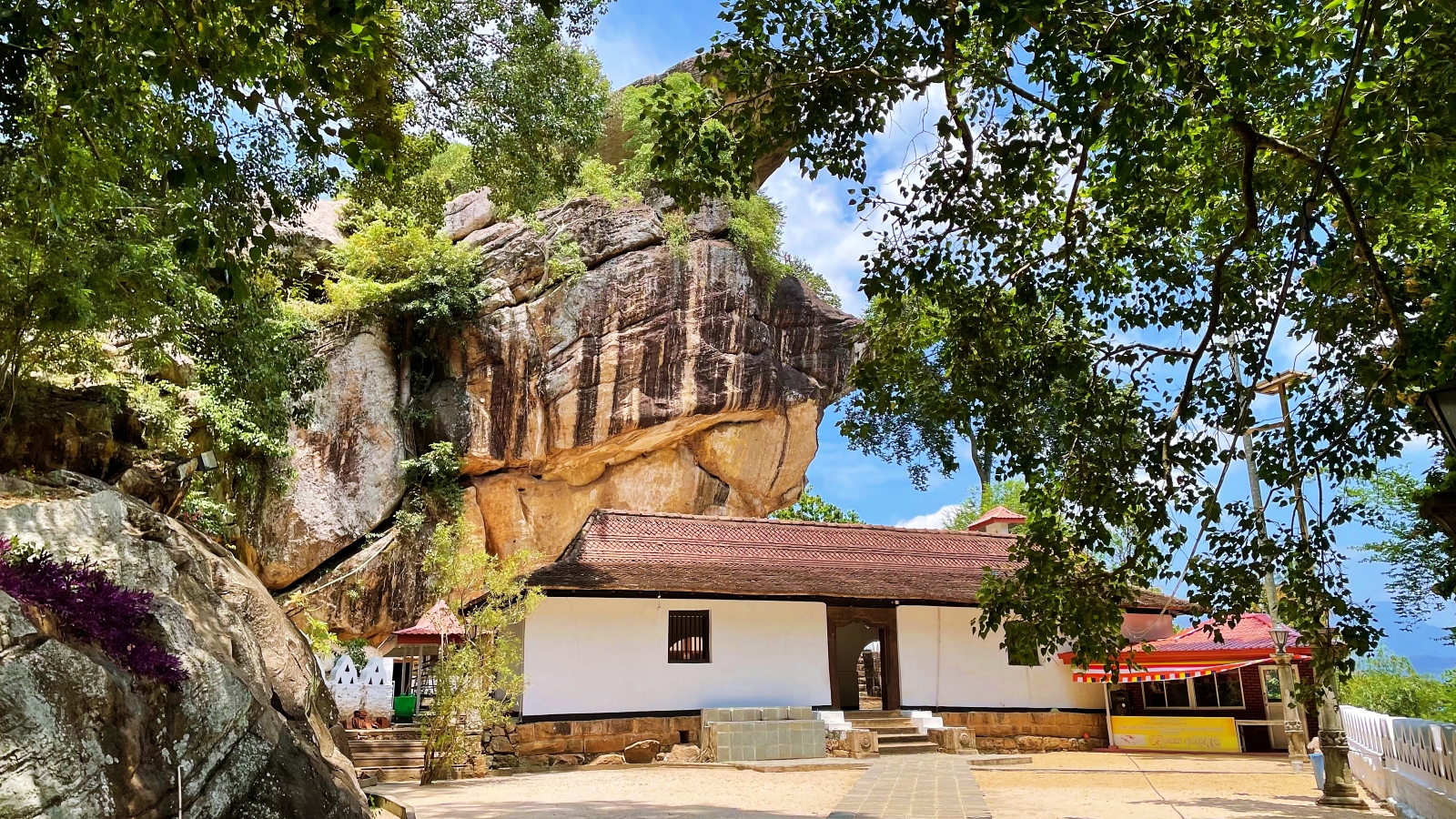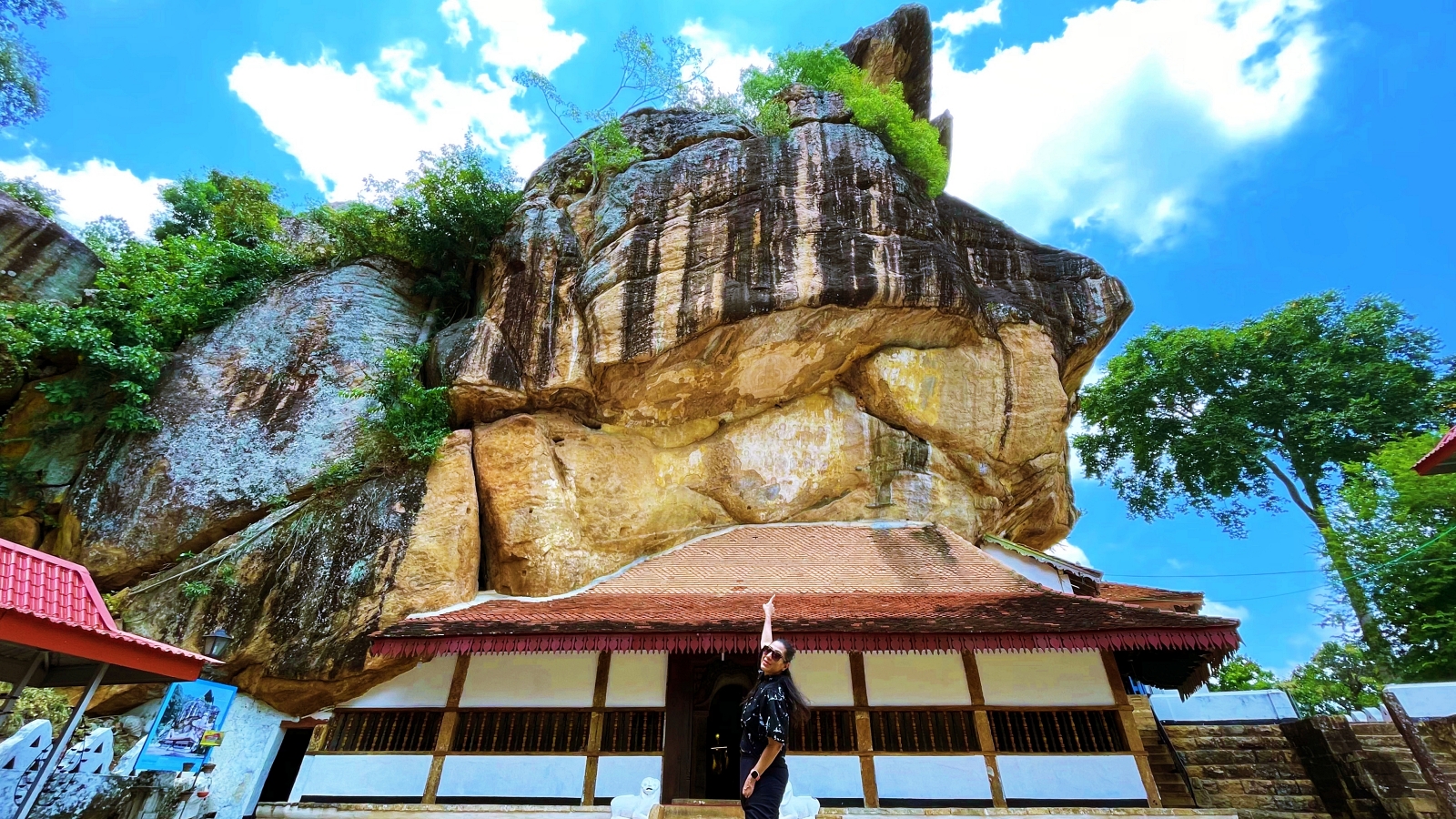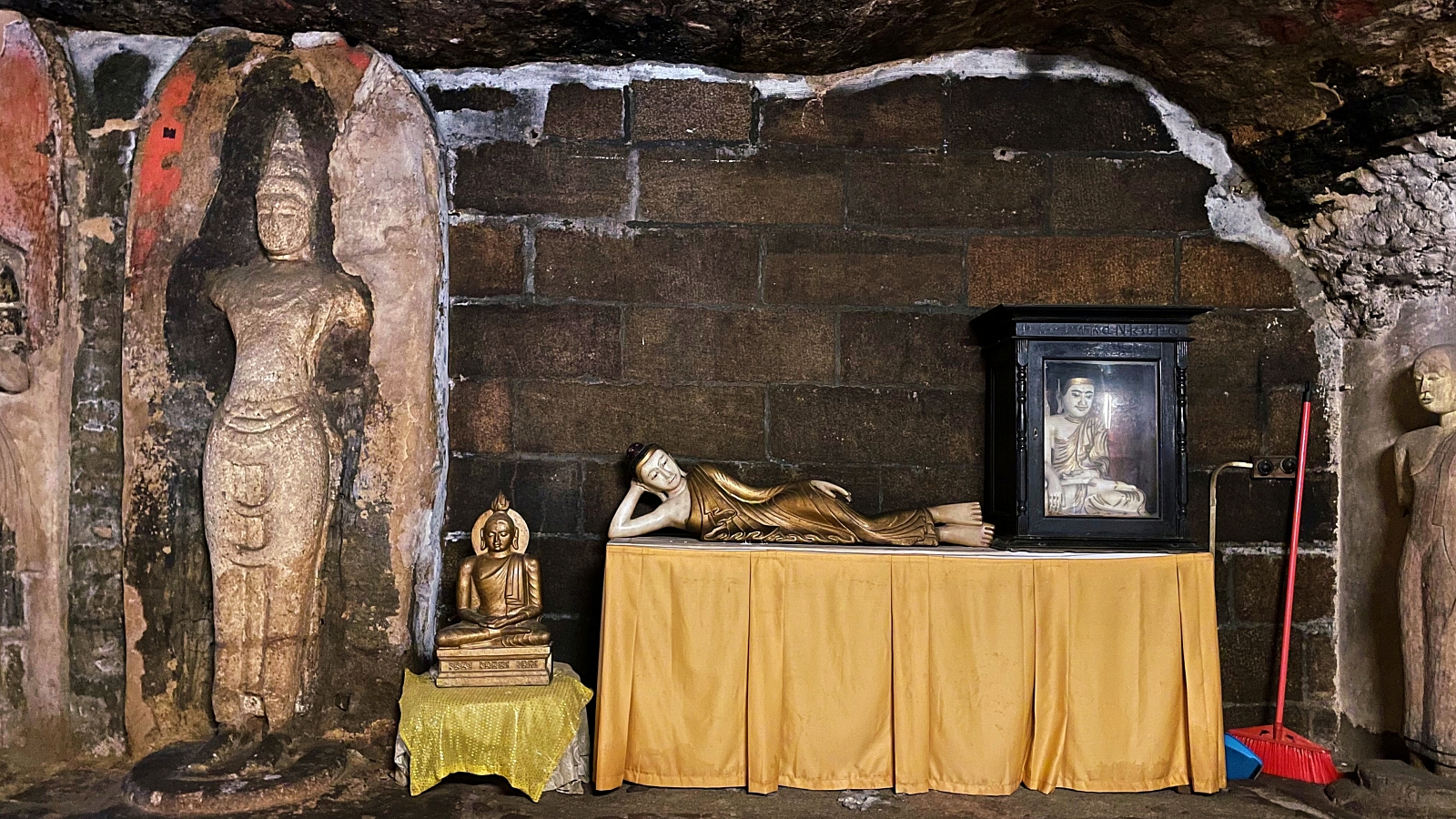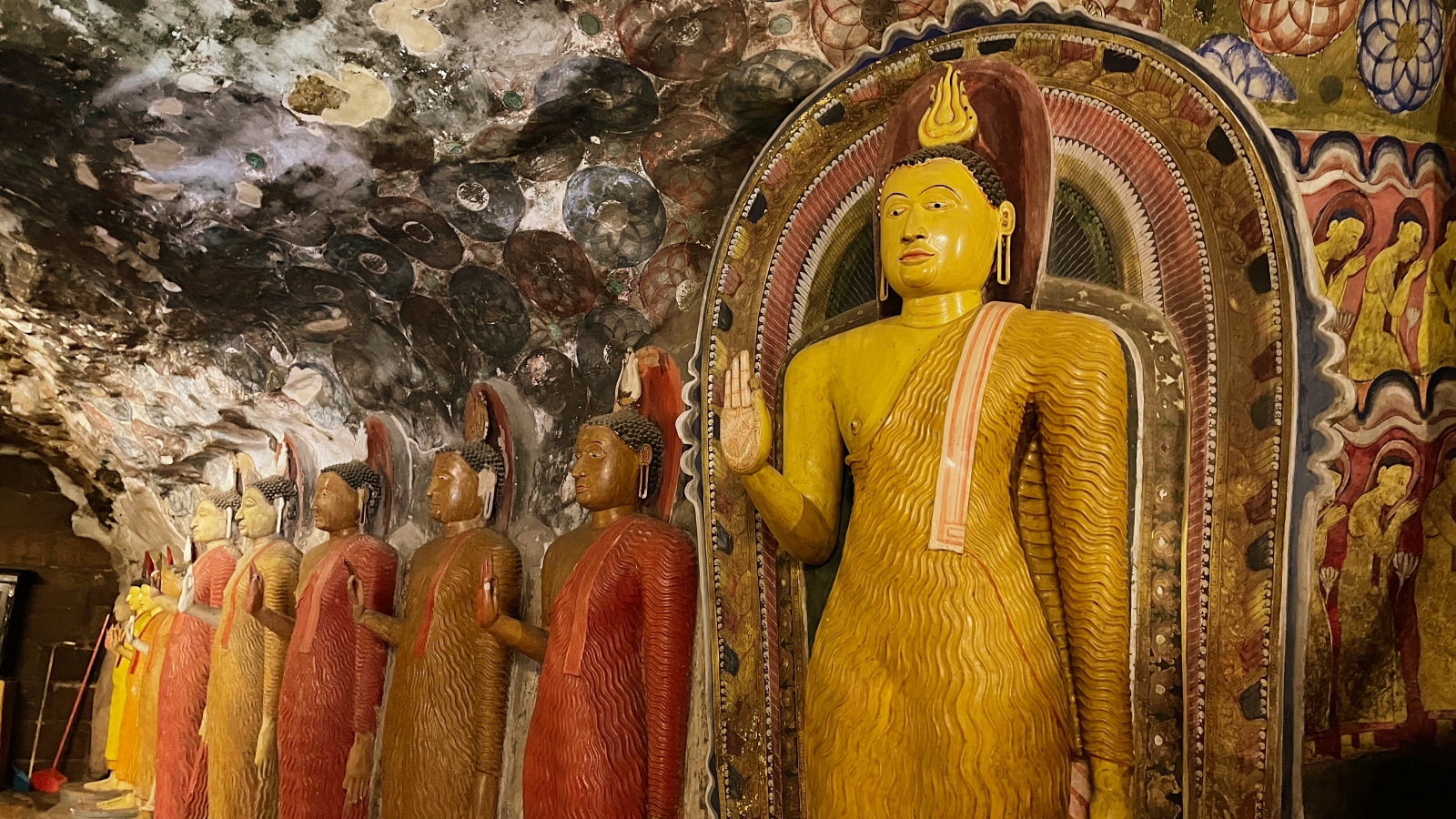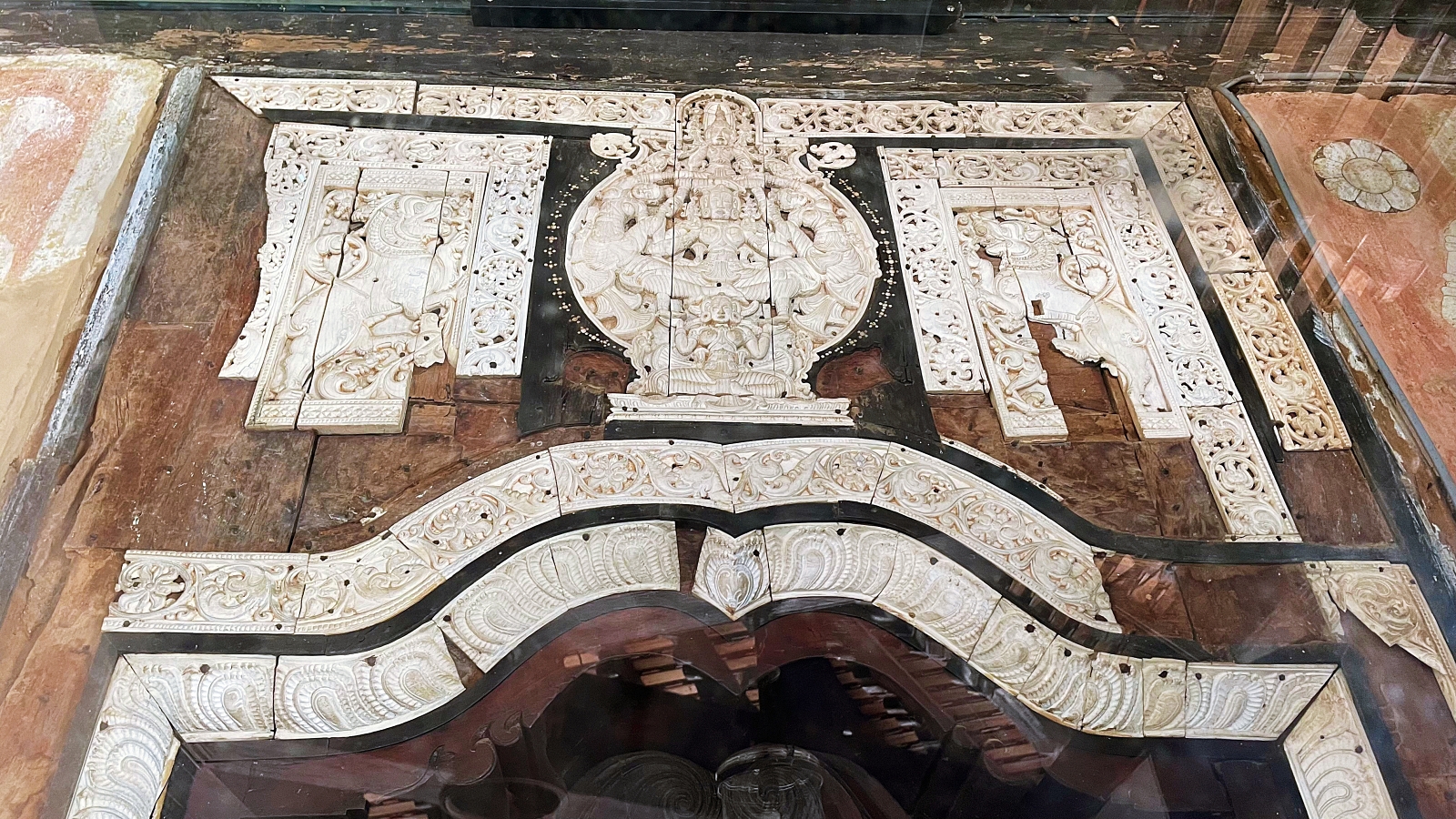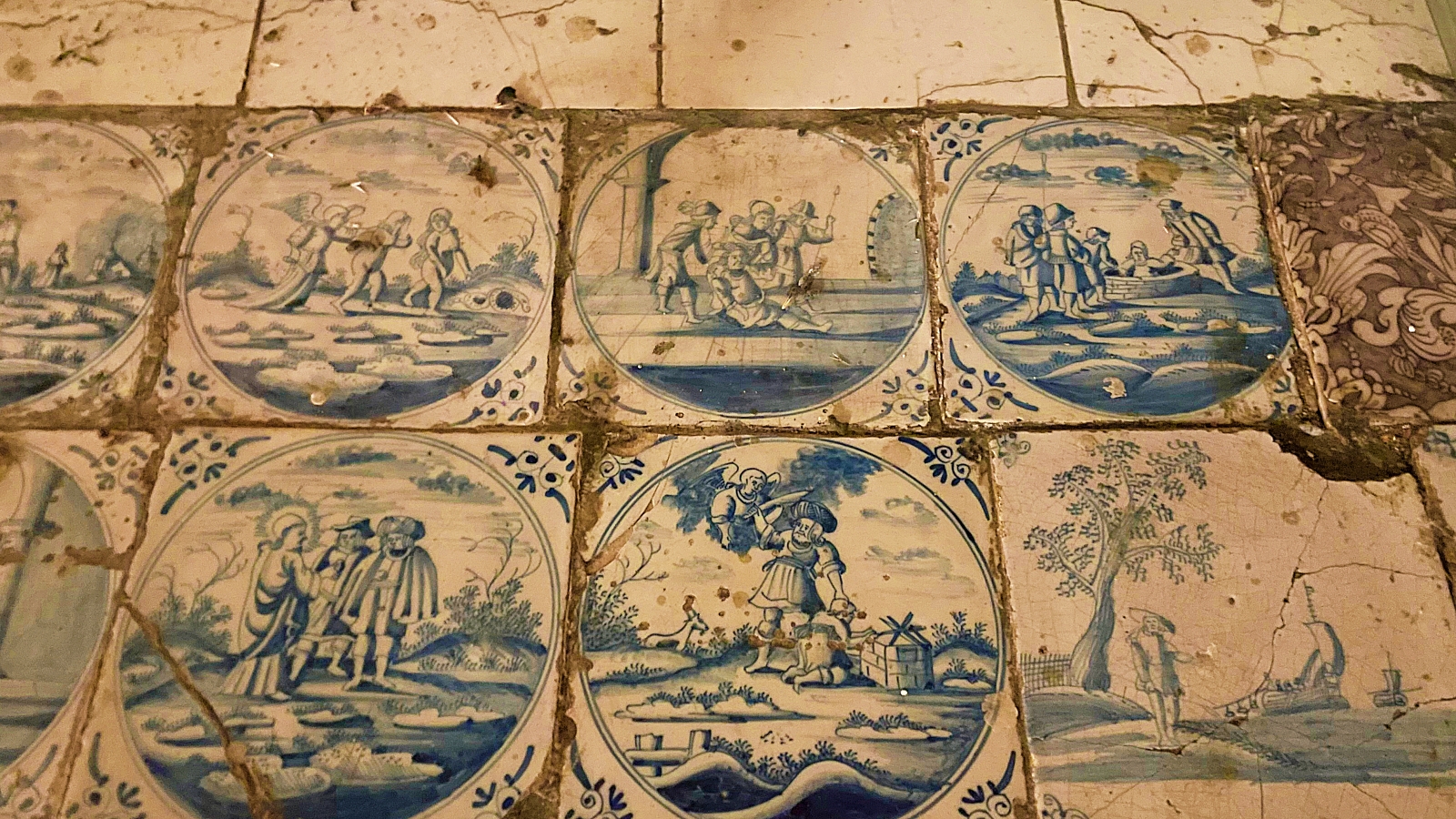Ridi Vihara: A 2nd-Century Silver Temple in Sri Lanka
The riches of Ridi Vihara have been credited with giving King Dutugamunu the means to construct Ruwanweliseya, a monumental feat that stands today as one of the tallest remnants of antiquity.
My week-long journey to Sri Lanka was a storybook of adventures. As I made my way from Colombo to Habarana, I couldn’t help but stop at the ancient Ridi Vihara (Ridee Viharaya), a 2nd-century Theravada Buddhist temple in the Kurunegala district near Dambulla. Legend has it that when Dutugamunu, the king of Anuradhapura who reigned from 161 BC to 137 BC, required funds to construct Ruwanweliseya Stupa, destiny intervened and he stumbled across a silver fracture at this very spot.
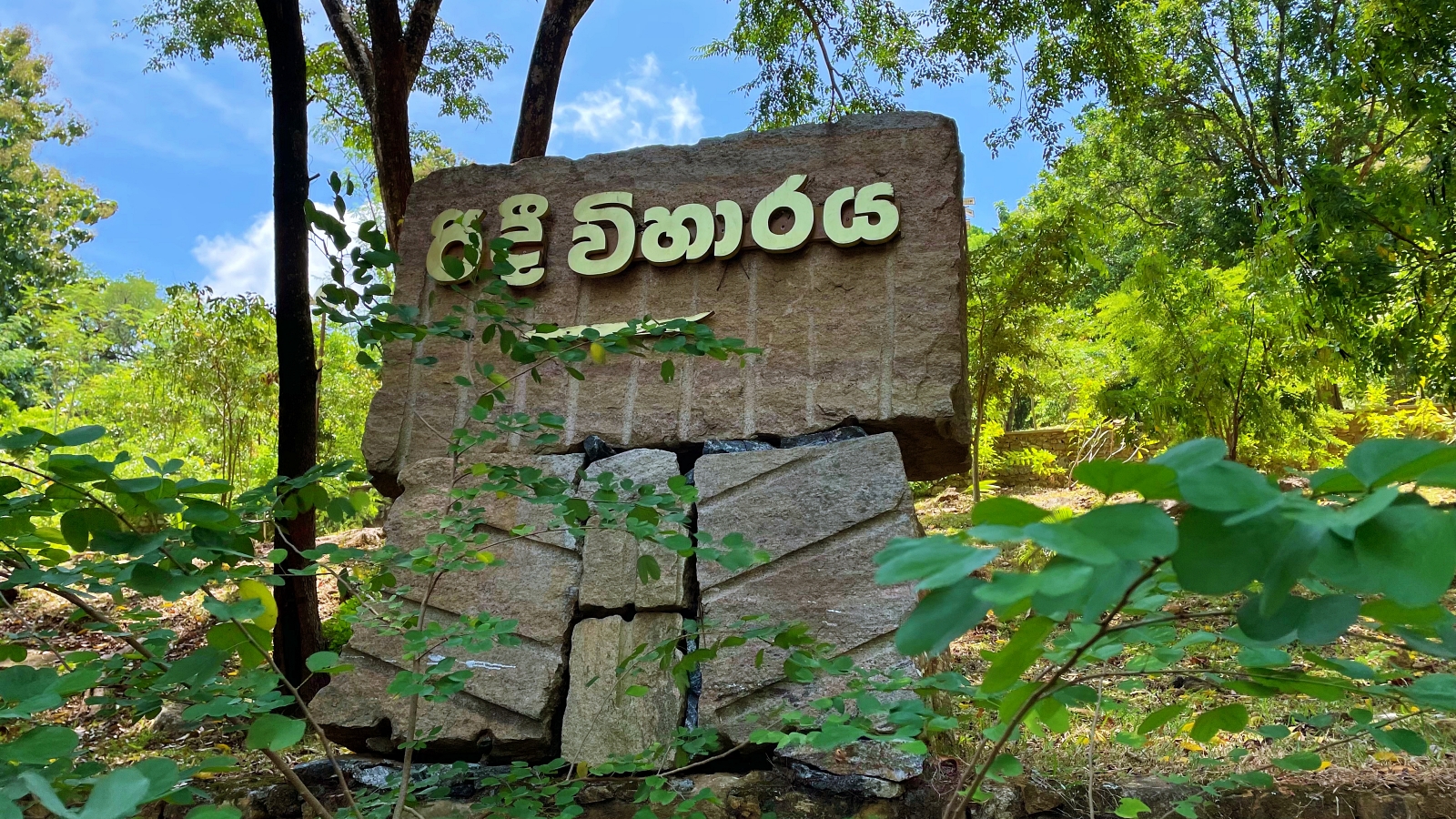
We pulled up to the parking lot and the tall trees seemed to loom even closer. A Sinhalese signboard, carved from stone, beckoned me towards the temple, with its cohorts of stony sentinels down the path.
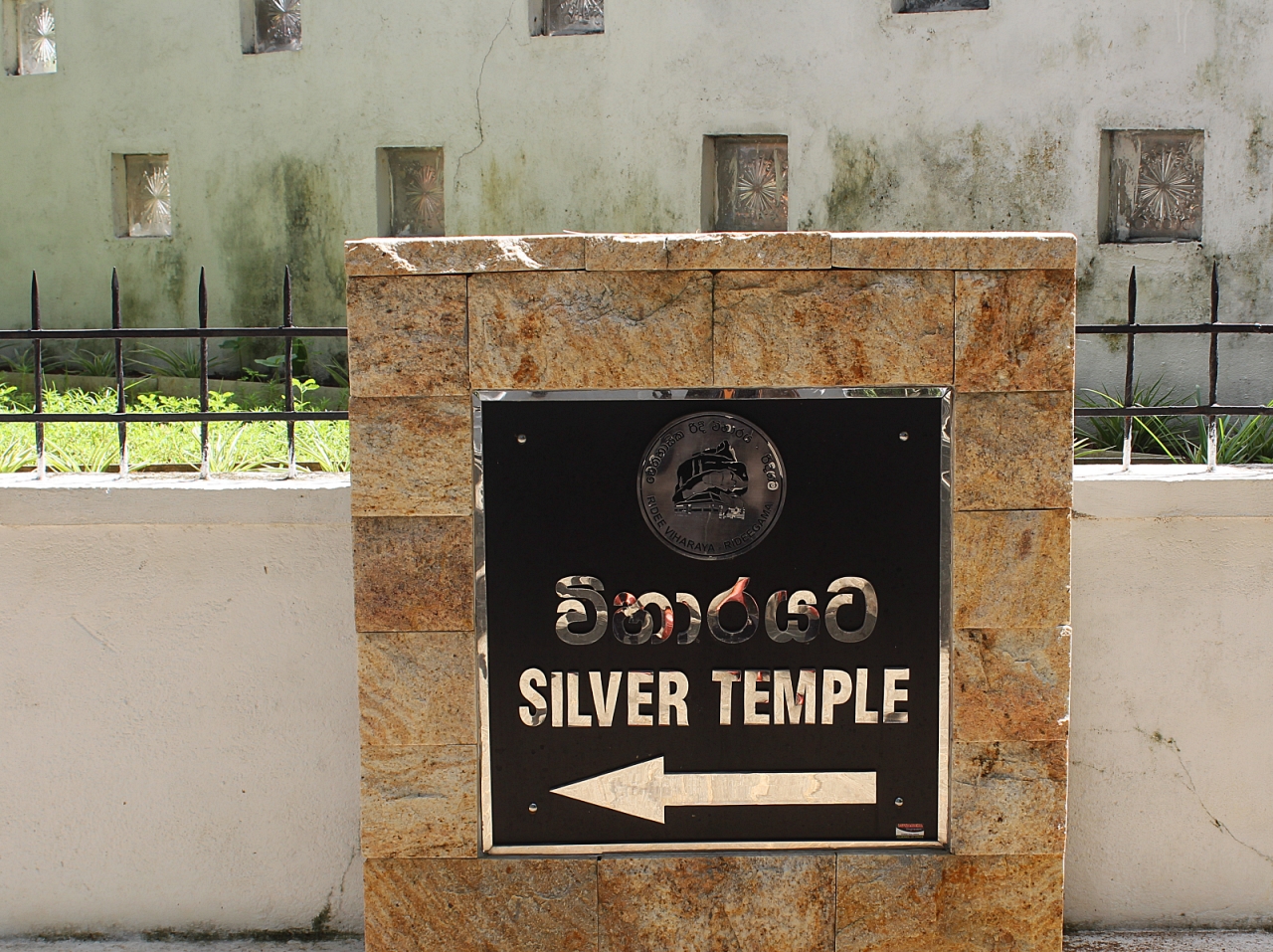
The entrance to the temple was unassuming, with two simple white gates – one near the parking lot and one just before the temple. Two stupas adorn the temple- one is beside a cave behind the Uda Maluwa and the other, the Sarasum Gala, is atop a separate hill. To reach these stupas, one must ascend a set of stone stairs. Legend has it that King Dutthagamani attired himself on a rock before offering prayers at the temple. This rock is situated to the right of the entrance and bears inscriptions which read “The Cave of the Chief Abhaya”, a possible reference to King Dutugemunu himself.
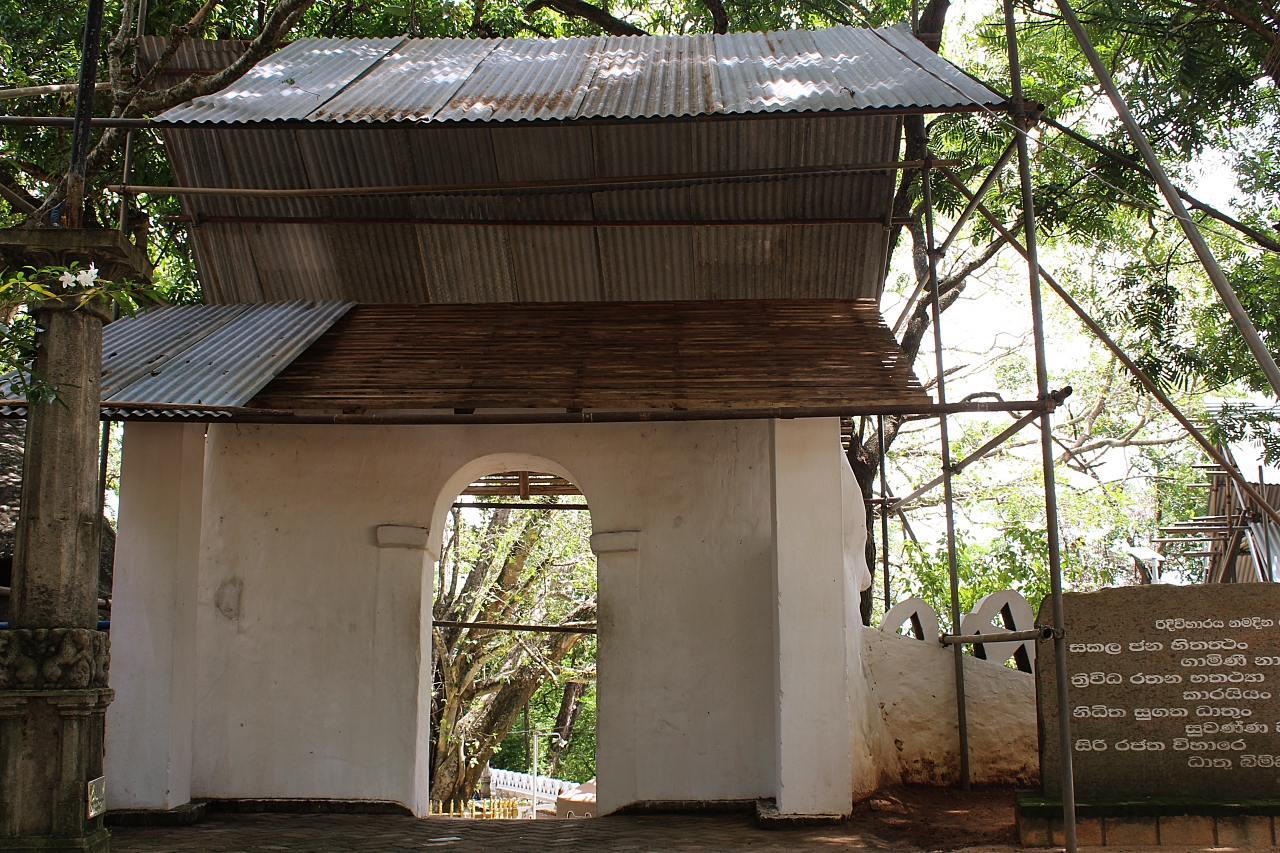
As you step through the second gate, two grand spectacles will come into view – on your right, the venerable Waraka Velandu Viharaya, and on your left, the monumental Ridi Vihara temple rock. The Waraka Velandu Viharaya is a reminder of the distant past, with 8 intricately-carved pillars adorned with Hindu motifs and a sculpted Buddha in its inner sanctum. Its name, which literally translates to ‘the place where breadfruit was consumed’, is steeped in legend, with tales of monks being offered breadfruit at this very spot.
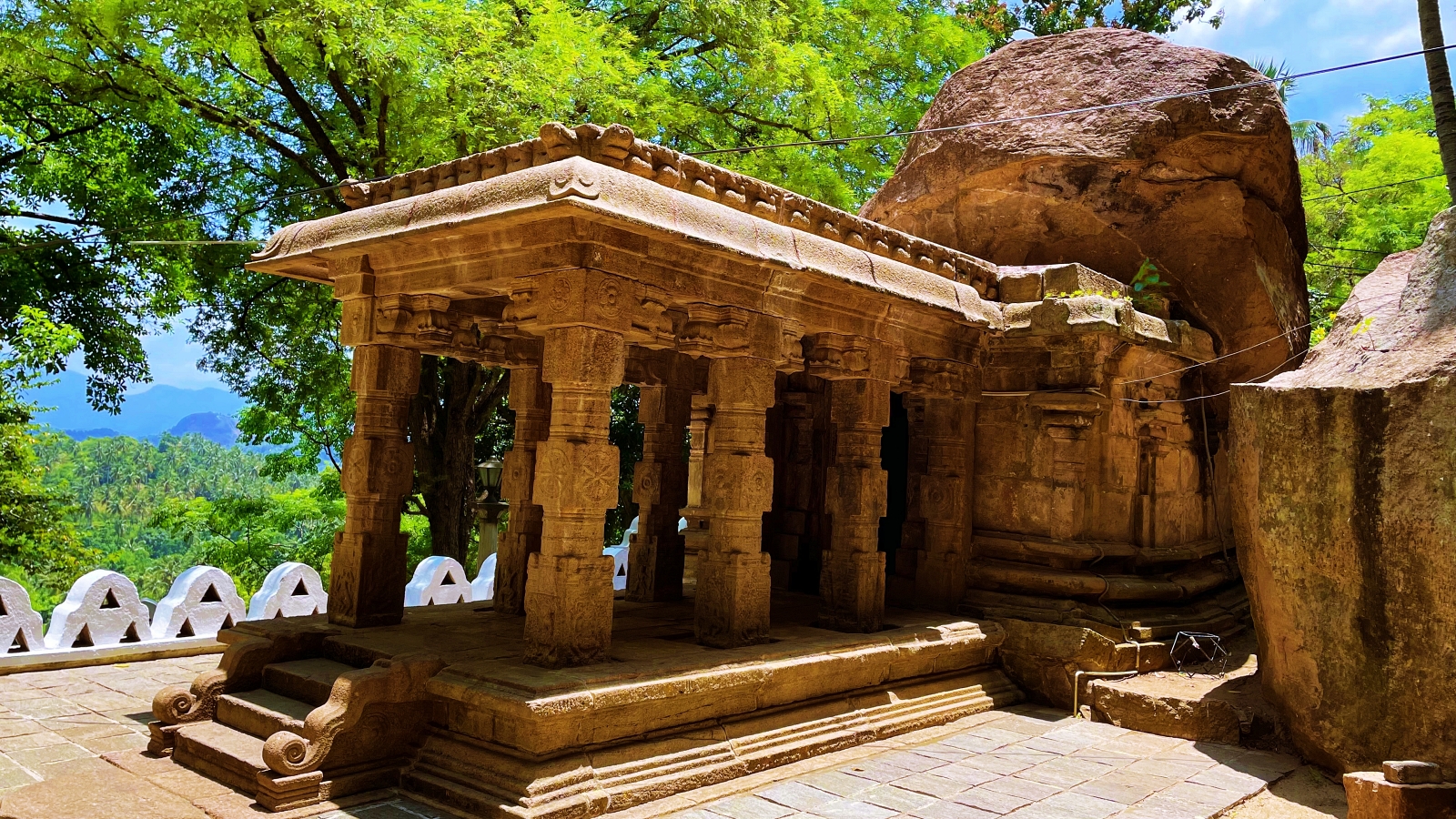
Table of Contents
A Remarkable Discovery by a Ginger Merchant
What makes the history of this temple so exquisite is the King’s discovery of it. As King Dutugamunu’s coffers ran dry while striving to complete Ruwanweliseya, a weary ginger trader trudging through Kurunegala found himself with no wood for his waggon whips. Undaunted, he decided to scale a nearby mountain in search of something to help him out of his predicament. Upon cresting the top, he spotted a Jackfruit tree being weighed down by its ripe fruit and, plucked the offering intending to give it away as alms.

Much to his surprise, the merchant was met by several Arahants, and so he set about slicing away the jackfruit’s rind to fill their bowls with its sweet juice. Once the meal came to a close, the Arahants departed; except the venerable Indagupta, who stayed behind to convey his appreciation. He said, “Go thou now too on this path, lay brother,” as he savoured the last bite of the fruit. The merchant then ventured forth into the rock tunnel and discovered the stack of silver. With a stroke of his axe, he extracted a chunk of silver and presented it to King Dutugamunu.
The King was elated at the surprise riches and ordered 300 stonemasons and 700 artisans to the site to excavate the rest of the silver and erect a temple in its place. Fast-forward to the 17th century and King Keerthi Sri Rajasinghe became the leader and converted the temple into a Rajamaha Vihara under the Kandyan administration. Today the temple is a veritable gallery of frescoes, Buddha statues, ancient paintings, and wooden and stone sculptures – all from the Polonnaruwa and the Kandyan periods.
Maha Viharaya, The Main Temple Hall
Gazing skyward, I beheld the 200 feet colossal contours of the rock stretching against the breathtaking backdrop of nature. Ancient Brahmin paintings, dating back to the 2nd century BC, still adorn its surface, a reminder of the once mighty empires of Polonnaruwa and Kandyan. As I approached, I noticed, the intricate drip ledges carefully carved to protect the temple and its people from the elements. On the left, a large metal diya holder radiated a soft, warm glow, and a magnificent moonstone lay embedded in the entrance floor.
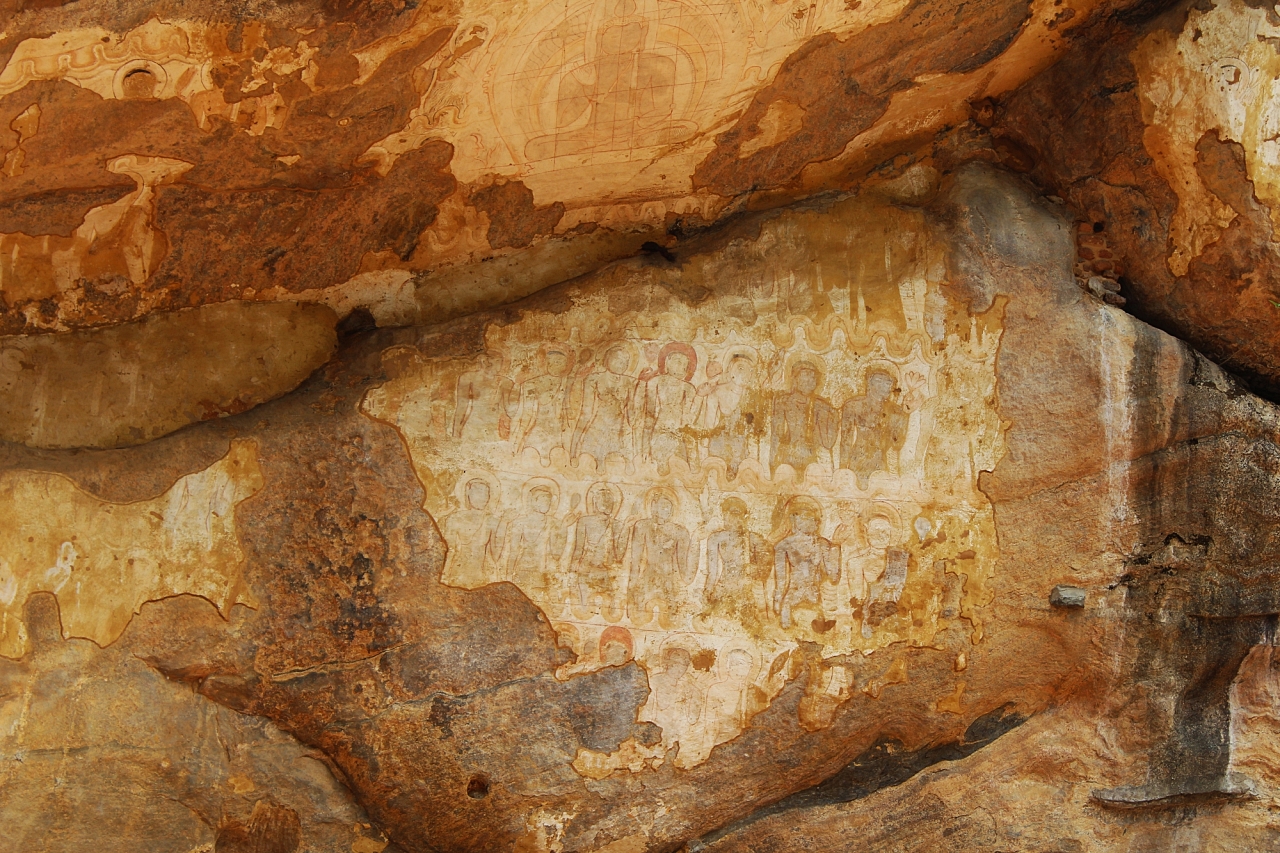
Under the enormous rock overhang, the caves converted into temples surprise you with their walls and doors still standing in place. With its intriguing architecture and serene ambience, I could almost feel the Buddhist teachings seeping through my veins. “The Mahavamsa records that the silver at Ridi Vihara enabled King Dutugamunu to construct the Ruwanweliseya Stupa in Anuradhapura — one of the world’s grandest ancient monuments,” quipped the custodian of the temple, as he told me that the village was eventually named Ridigama to monumentalise the temple.
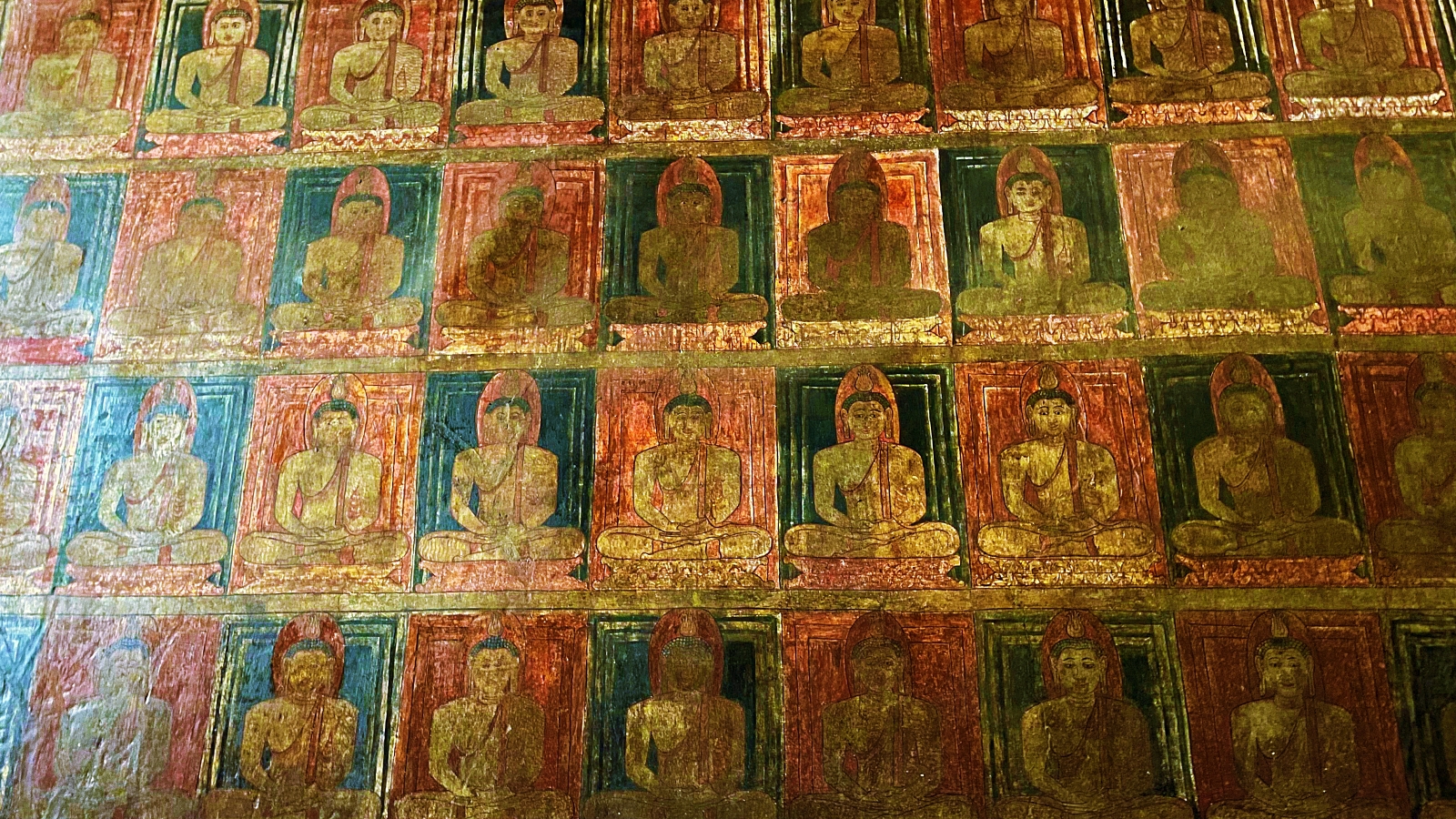
He then pointed towards the ‘Hevisi Mandapaya’ or Drummers’ Pavilion, at the entrance of the Maha Viharaya, built during the Polonnaruwa period as a reminder of the legend. The ancient and revered Pallakkiya, suspended from the roof, once carried elderly monks from place to place. Inside, you’ll discover an abundance of relics, including a rice bowl and other artefacts of immense historical value.

As I stepped into the temple, I was greeted by two Makaras (Dragons or Yali in Tamil), standing guard at the entrance like vigilant sentinels. I followed their lead, to the Pahala Vihara or the Main Shrine. My gaze was drawn to the walls, intricately painted with depictions of the life of Lord Buddha and the ancient Jataka tales. And, in the centre of it all, a golden Buddha statue stands, enshrined in a glass box, radiating its special kind of brilliance.
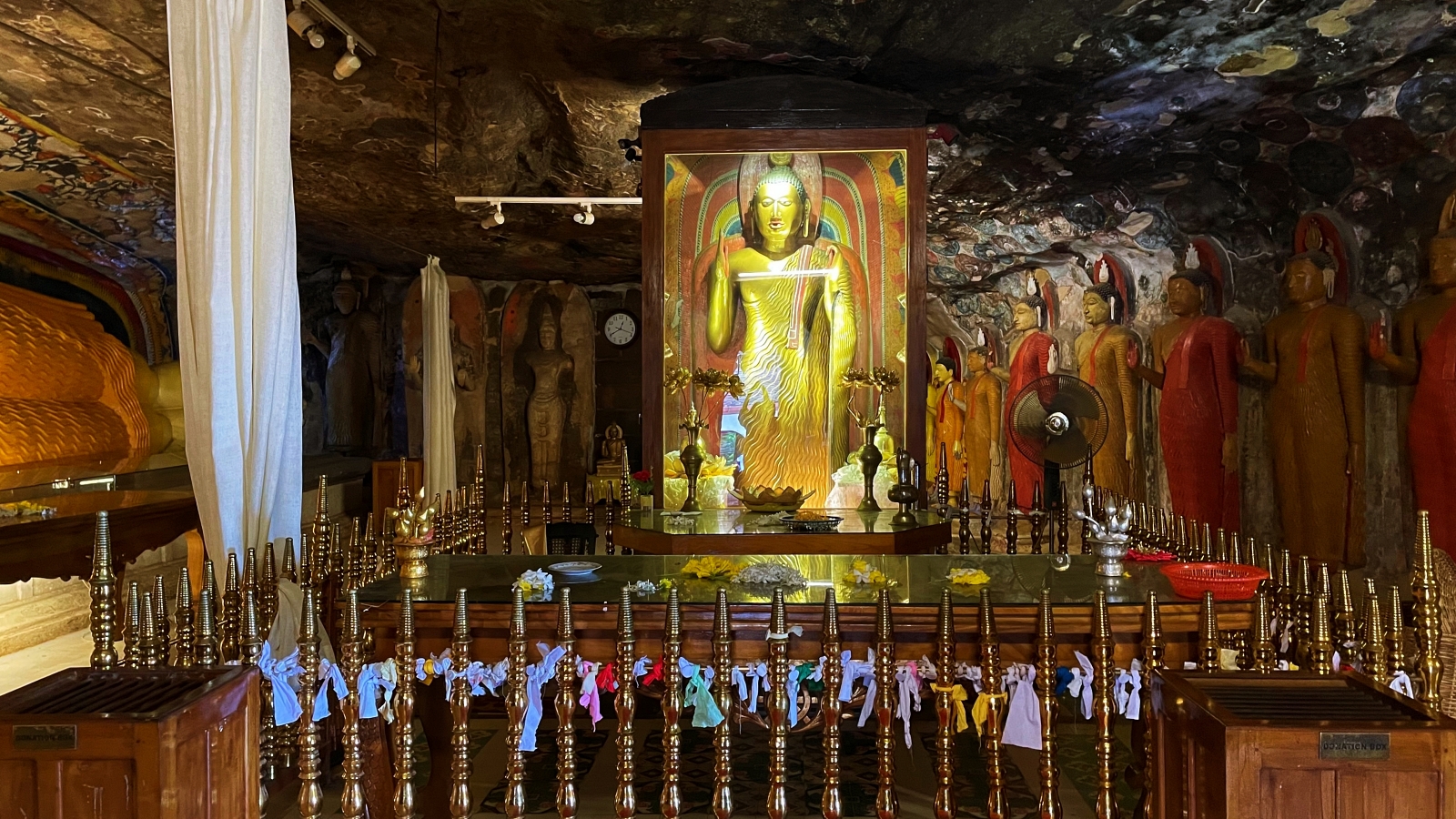
With intrigue, I walked up to the statue and studied its right hand, held sideways. Just then, the temple custodian’s voice rang, “That’s the Bhumis-Parsa Mudra, or reaching the earth position. This is where the silver was found. It’s said that this golden Buddha was brought from India.” Its luminous golden glow was even more captivating in the shadows, giving it an almost mystical aura.
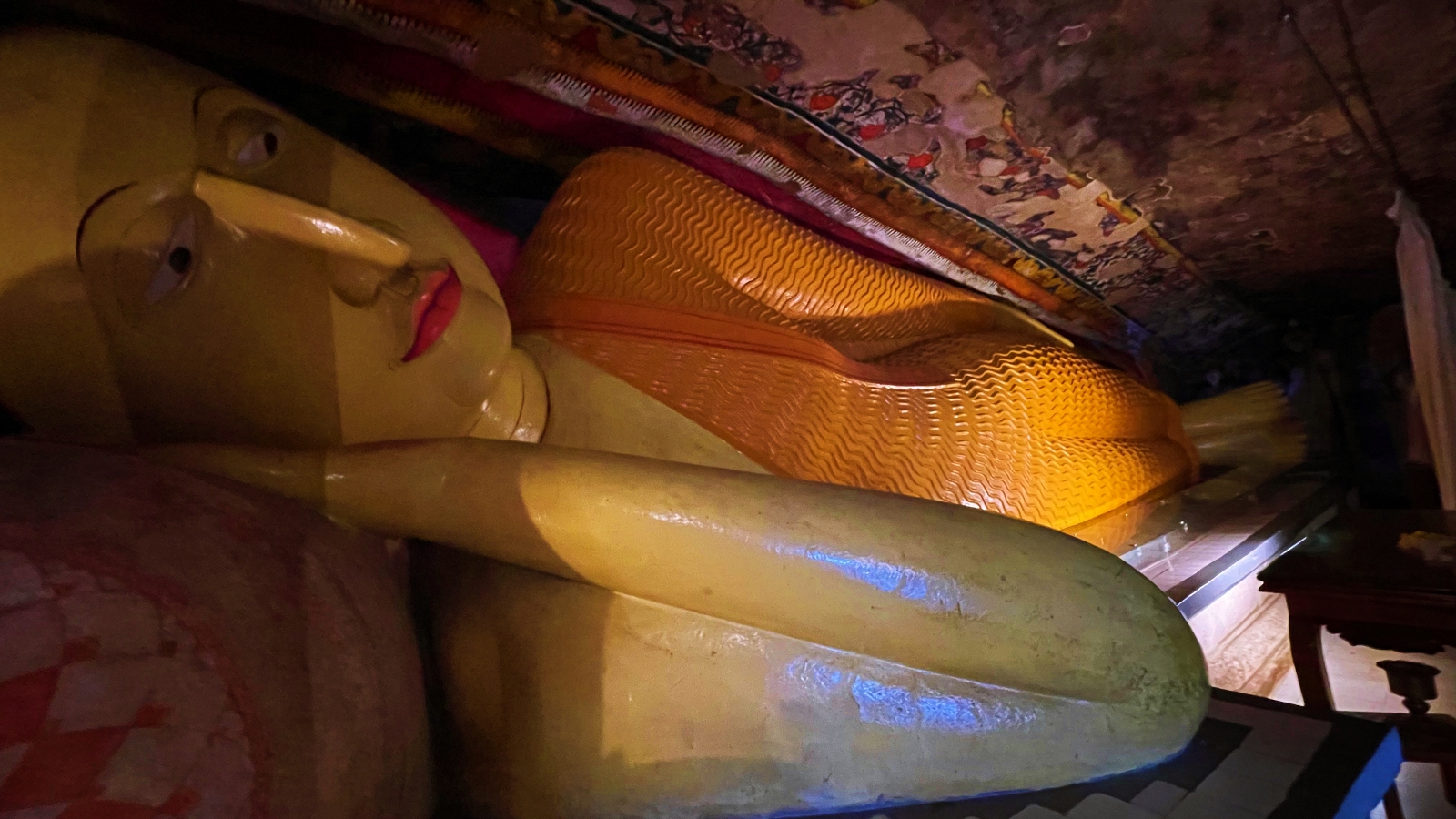
King Keerthi’s grandeur is on full display in the cave for all to admire. On one side, five Buddha sculptures grace the walls, painted in a vibrant array of yellow, orange, red and black with a golden sheen. On the other side, a colossal 27-foot reclining Buddha statue stands out against the stark backdrop. But the artistry doesn’t stop there – nestled in between are the crumbling wooden remains of Lord Vishnu, and a marble figure belonging to King Dutu Gemunu.
As a final flourish, an ancient alms bowl used for the Buddha Puja is also on display, accompanied by a flower pedestal which displays 100 Dutch porcelain tiles depicting the life of Jesus Christ. I, then, stepped through the doorframe which held the gods’ treasured ornaments.
Here is a stunningly crafted Pancha Nari Ghataya ivory artwork of five interlaced female figures. King Keerthi held elephant tusk carvings in high esteem, because only the most privileged few – monarchs, nobles and revered Viharas – were bestowed with such a treasure in that era.
Uda Vihara, or, Upper Shrine
As I stepped away from the main vihara, I was met with a flight of stairs that led me to the Uda Viharaya or Upper Temple of the 18th century. I was awed by its elephant-shaped wing stones, Sandakada Pahana moonstone, and three rooms connected by a single hallway. In the first room, I was humbled by the presence of Kumara Bandara Deviyo, the venerated rock guardian of the temple. As I stepped into the second room, nine maidens composed in the shape of an elephant to the right of the external entryway sprang to life before my eyes. The creative visualization techniques used by the fresco painters are a delight to watch.
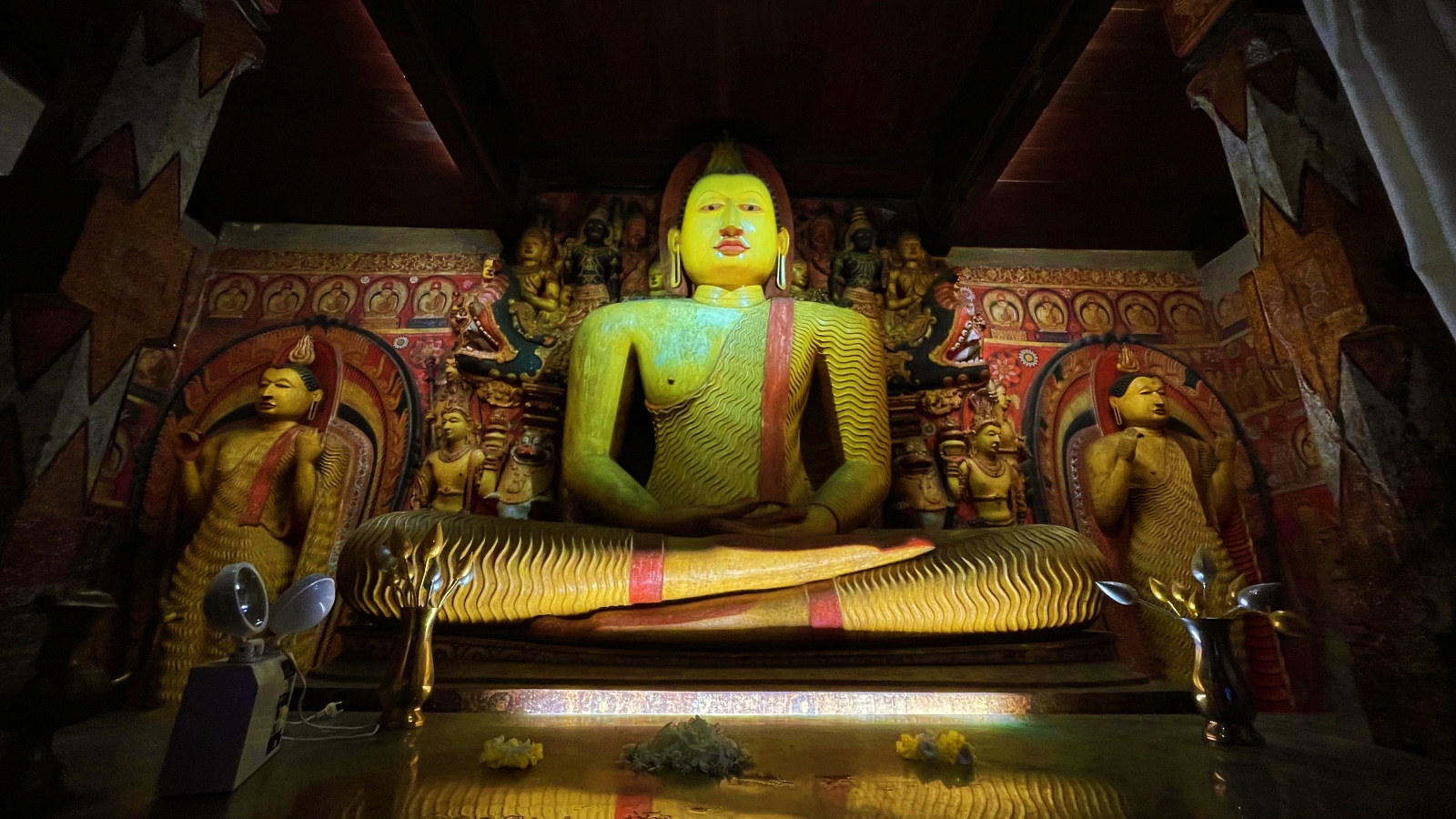
Stepping into King Keerthi Sri Rajasinghe’s Uda Viharaya, one is immediately spellbound by the 18-foot Samadhi Buddha statue, said to be an integral part of the Kandyan culture. But wait, it doesn’t end there! A single pedestal honours the famous battle between Rama and Ravana with three soldier figures. Among the plethora of designs, the Tri Singha, a three-lions-in-one-head sculpture and the Vrushaba Kunjaraya, an incredible work of art of an elephant and bull in a sweet embrace, stand out as favourites.
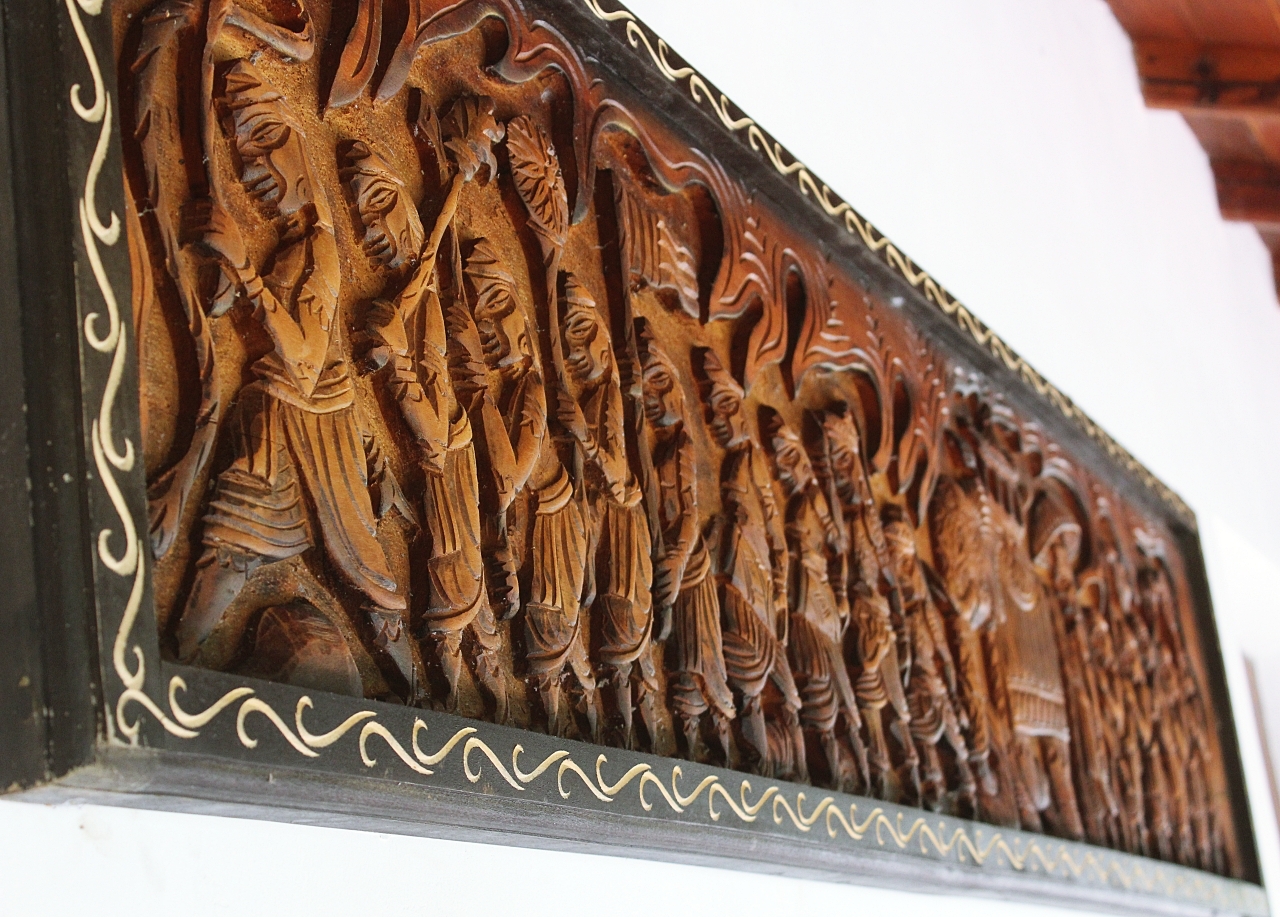
As I scurried away, I stole one last look at the hallway, admiring the statues of female dancers. It is such a peculiar sight to behold in a Buddhist temple, but a defining feature of the Kandyan period. My visit to the Ridi Vihara was a brilliant chance to gain a better understanding of Ceylon’s ancient art and culture.
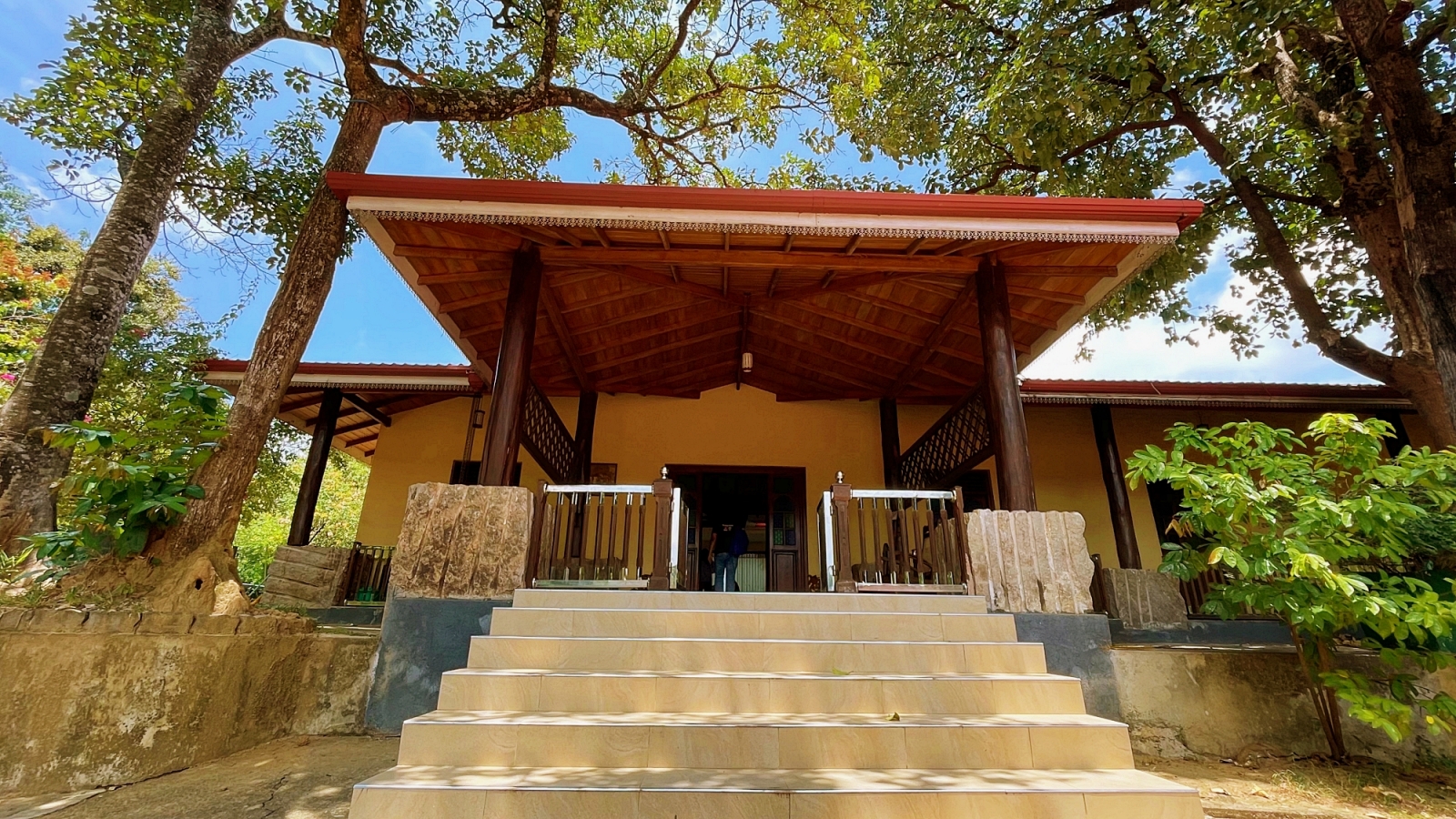
Before you set out on your journey, don’t forget to pay a visit to the chief Monk at his chambers adjacent to the temple. After taking in the splendour of the Silver Temple, I luxuriated in a delightful high tea at the guesthouse managed by the Vihara – a delightful experience I’ll never forget.
How To Get There
Travelling from Colombo to Ridi Vihara can be a breeze with four different ways – train, bus, taxi, or car – you can choose the one that best suits your budget. For those who want to enjoy the views, hop on a train for a scenic two-hour ride for just Rs. 400. Prefer a little more luxury? Hop in a taxi or private car for a two-hour trip for Rs. 1800. And for those who want a little more time, the bus ride is a three-hour journey for Rs. 400.

Insider Tips:
Explore the complex before the sun gets too high and the floors become too hot. No hats or footwear are allowed inside. For those looking to take refuge in the tranquillity – Vihara Trust offers four rooms, free of charge, just a short walk away from the silver temple.

